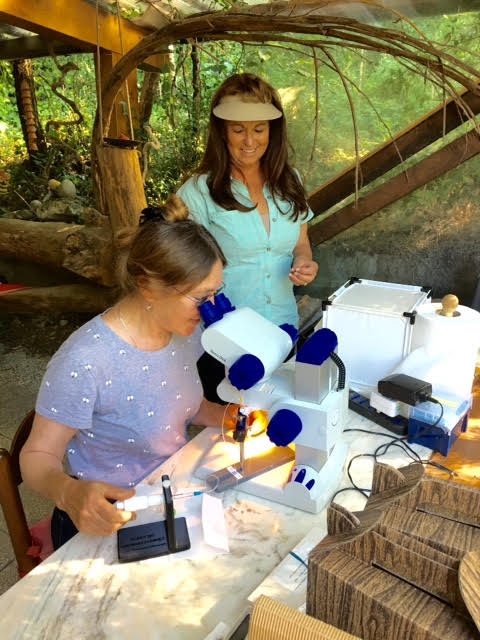It's August, 2007 and bee breeder-geneticist Susan Cobey, manager of the Harry H. Laidlaw Jr. Honey Bee Research Facility, University of California, Davis, is opening a hive in the apiary.
"Girls, where's your mother?” she asks again, pulling out another frame.
She quickly locates the queen bee, "the mother of them all." And "all" is not right in the bee world.
Susan "Sue" Cobey wants to "build a better bee."
Cobey, now a bee breeder-geneticist at Washington State University, seeks to maximize the good traits and minimize the bad traits. By controlling the genetics of honey bees (Apis mellifera), she says, researchers can breed stronger, more survivable bees--bees able to withstand such pests as varroa mites and such maladies as colony collapse disorder. “Controlled mating is the basic foundation of all stock improvement programs.”
Cobey who joined Washington State University's Department of Entomology in 2010, works with department chair and bee scientist Walter "Steve" Sheppard, who researches population genetics and evolution of honey bees, insect introductions and mechanisms of genetic differentiation; and bee scientist Brandon Hopkins, an expert on cryopreservation of bee semen.
"Building a better bee” involves collecting bee semen (germplasm) in European countries, including Italy, Slovenia, Germany, and the Republic of Kazakhstan. Those countries, she points out, rear bees with favorable genetic traits, such as resistance to varroa mites, the No. 1 enemy of beekeepers in the United States.
The dwindling gene pool diversity in the United States is troublesome, Cobey says. Although European colonists brought honey bees to the Jamestown colony in 1622, live honey bee imports have been banned in the United States since 1922.
So Cobey has been traveling to Europe since 2006--every year but 2016--to collect bee semen. “It took me 22 years to get that first permit," says Cobey. "It was opening the Canadian border to Europe that turned it--politics, not biology-based. We started asking (to collect bee semen in Europe) in the early 1980s with Harry Laidlaw's backing."
"My first trip to Europe was in 2006 from Ohio State University for carnica (Apis mellifera carnica, a darker subspecies) bee stock," recalled Cobey, who studied and trained with Harry Laidlaw, the father of honey bee genetics. Cobey joined the UC Davis Department of Entomology in 2007 and a year later, she began collecting bee semen in Europe with Steve Sheppard. The WSU bee breeding program involves crossbreeding honey bees to bolster their genetic traits. WSU is the only lab in the country with permits to import bee semen, and the only laboratory with the ability to freeze it. The WSU team uses liquid nitrogen to preserve the bee semen.
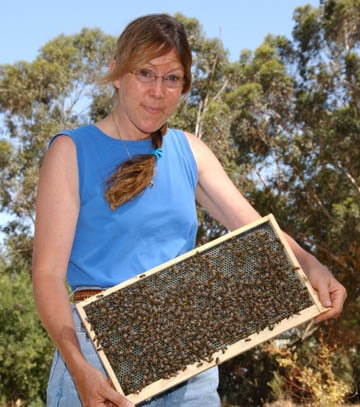
The European trip was memorable and productive. "Slovenia is a beautiful country with a long tradition of beekeeping," Cobey said.
"In Semic, Slovenia, we collected bee semen, met with the local beekeepers and gave presentations about our program,” Cobey said. “Afterwards we celebrated with a feast of roasted pig, hosted by Stane Plut."
"What a trip that was (to Italy and Slovenia)!" said Park-Burris. "Slovenia only allows the beekeepers to keep Carniolan bees. Sue was in heaven and it was fun to see how excited she got about her bees. Likewise I was really happy to see the Italy stock in Bologna again. The beekeepers there were so excited that we wanted more of their stock. Their hospitality was overwhelming."
Park-Burris marveled that the Slovenians keep almost all of their hives in "houses" and "then they paint pictures on them that tell a story. It was very interesting. One Slovenian told me that they treat their bees like pets and that was so true!"
Cobey is an international authority on the instrumental insemination of queen bees. She's taught the specialized technique for more than three decades, instructing students how to extract semen from a drone, and inseminate an anesthetized virgin queen. Magnified images on a computer screen help illustrate the procedure.
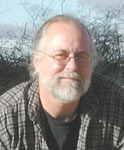
Cobey began training students in instrumental insemination in 1984. "This has taken me all over the world--currently I have invitations/inquiries to six countries," said Cobey, who has set up a lab at her home on Whidbey Island to teach workshops. Husband Timothy Lawrence, also a veteran beekeeper, is an associate professor and the county director (Island County) of Washington State University Extension.
"I receive three to five requests for classes per day here; I'm sorting these to the most needed/most serious," Cobey said. "The interest is much more serious. But note--still many struggle with this, as there are many aspects, including the specialized beekeeping that goes with it."
Cobey recently taught UC Davis staff research associates and beekeepers Bernardo Niño and Charley Nye of the Elina Lastro Niño lab in a three-day class in her lab. "I'm just doing small classes so I can give more individual attention, and concentrate on the details. So I have just three or four people per class. I hope UC Davis starts some classes as the interest is overwhelming." A UC Davis goal is to offer classes in 2018 or 2019, according to Niño.
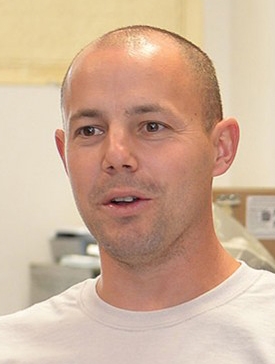
Some of Cobey's students go on to teach others the technique. UC Davis graduate Elizabeth Frost learned from Susan Cobey while working as her staff research associate at the Laidlaw facility. "She is now teaching instrumental insemination in Australia," Cobey said.
Cobey traces her interest in bees back to the 1970s. After enrolling in a student exchange program in entomology in 1975 at Oregon State University, Corvallis, she received her bachelor's degree in entomology in 1976 from the University of Delaware, Newark. From 1978 to 1980, she worked at UC Davis, where she was influenced by Harry Laidlaw (1907-2003).
Laidlaw perfected artificial bee insemination technology. “He discovered the valve fold in the queen bee which hinders injection of semen into the lateral oviducts,” Cobey said. “He developed instrumentation to bypass the valve fold enabling the success of bee insemination.”
Utilizing the training, Cobey established the Vaca Valley Apiaries in Vacaville in 1982, developing the highly regarded New World Carniolan Breeding Program. The Carniolans, originally from the Austrian Alps and the Balkans, are darker than the popular Italian honey bees, the most common subspecies in the United States. The Carniolans are known for their gentle behavior, and may be more suited to cooler weather.
In 1990 Cobey pulled up roots—and hives—and settled in Ohio, serving as staff apiarist at the Rothenbuhler Honey Bee Research Laboratory at Ohio State University until accepting the staff research associate position and manager of the UC Davis facility in 2007.
Now she's focused on the WSU bee breeding program, which produces breeder queen bees, which are then provided to commercial queen bee producers, who in turn can produce thousands of queen bees for the nation's beekeepers. The goal is to preserve and improve the stock of honeybees and to prevent subspecies from extinction.
Hopkins says that genetic diversity offers improved bee fitness and productivity. A genetically diverse colony handles diseases better. The biggest need in the U.S. honey bee population is anything that would increase resistance to parasitic Varroa mites, Hopkins says. (See WSU post.)
Cobey is featured in a National Public Radio piece, "No Offense, American Bees, But Your Sperm Isn't Cutting It."
"Honey bees aren't native to America," Cobey told reporter Ryan Bell. "We brought them here. But the U.S. closed its borders to live honey bee imports in 1922, and our honey bee population has been interbreeding ever since."
"Girls, where's your mother?"
Attached Images:
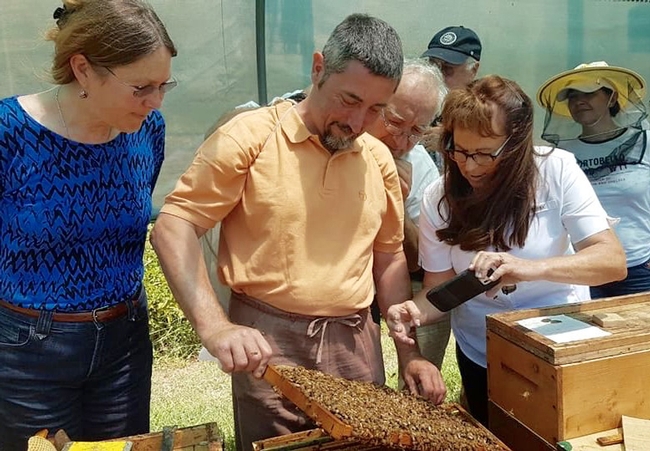
WSU bee breeder-geneticist Susan Cobey (far left) and California commercial queen bee breeder Jackie Park-Burris watch as Manuele Cantoni, Italian queen breeder, opens a hive. This photo was taken last summer in Bologna, Italy.
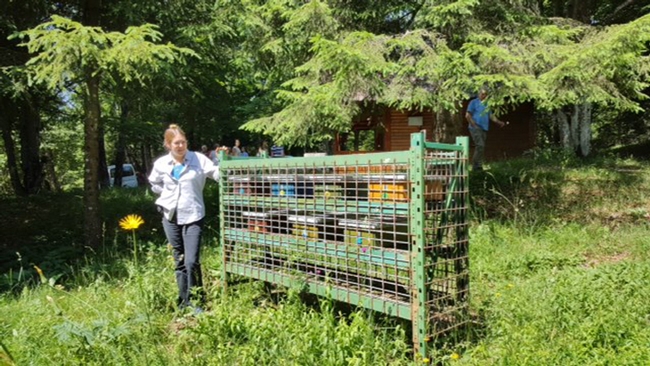
WSU bee breeder-geneticist Susan Cobey stands in the carnica apiary of Stane Plut in southern Slovenia. The caged nucs are bear-proof. Nucs, or nucleus colonies, are small honey bee colonies created from larger colonies.
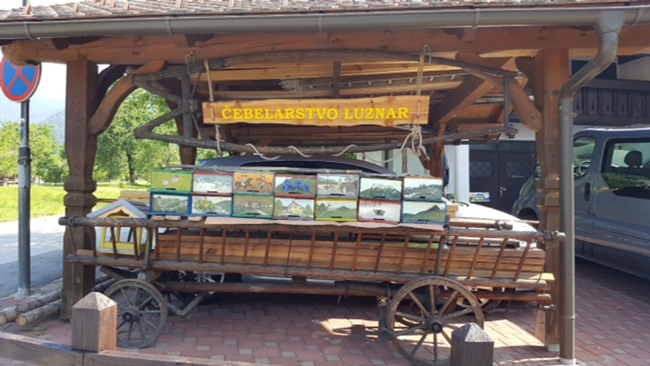
A trailer of old, empty Slovenia bee hives is being used for yard art. This photo was taken in front of the house of Erik Luznar in Slovenia. The WSU team collected in his apiary. (Photo by Jackie Park-Burris)
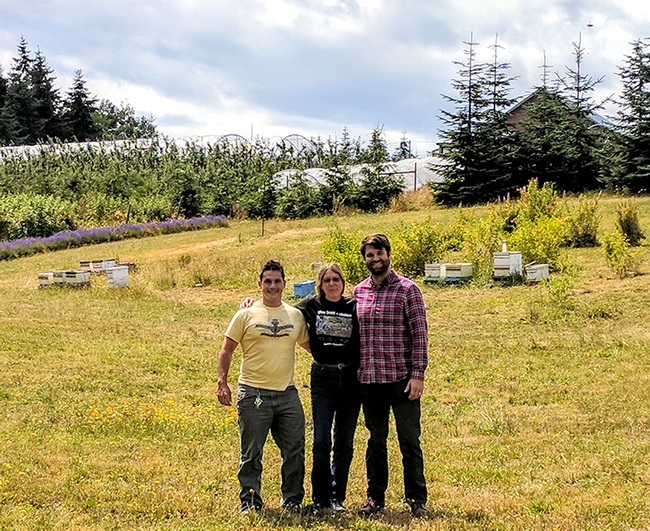
UC Davis staff research associates in the Elina Lastro Niño lab recently enrolled in one of Susan Cobey's queen bee insemination workshops on Whidbey Island, Washington state. From left are Bernardo Niño, Susan Cobey and Charley Nye.
